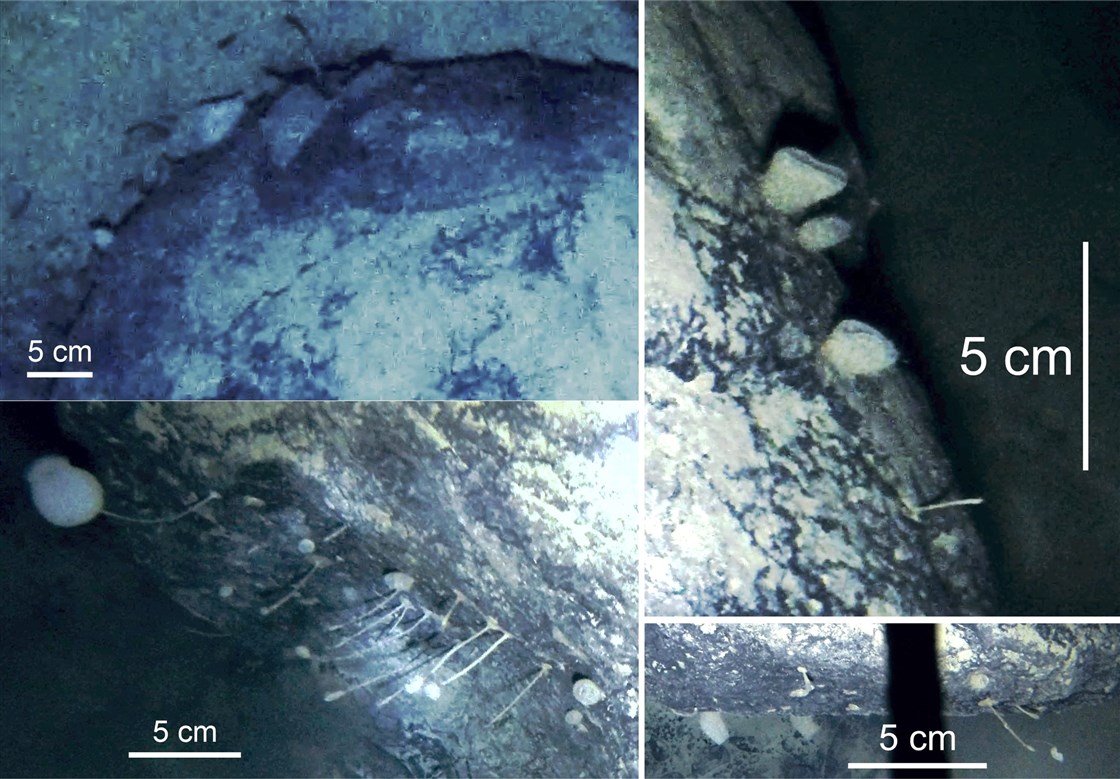The intense pressures and lack of light should technically make the deep ocean uninhabitable — yet, life does not cease to exist in these submarine conditions.
While sampling the seafloor for sediment approximately 260 km under the Filchner-Ronne Ice Shelf in Antarctica, a team of researchers at the British Antarctic Survey accidentally found a boulder harboring sponges and individuals of an unknown species.
The scientists proposed that these organisms are sessile and most likely filter-feeding, similar to sponges. The boulder’s location is between 625 and 1,500 km from the nearest region of photosynthesis, which raises concerns about the species’ energy sources.
“Scientists are currently puzzled as to how these organisms survived in environments where nutrients are scarce and their expected food source was not present,” says Arshad Imrit, a research assistant in Dr. Sapna Sharma’s lab. “Discovering how these organisms sustain themselves will allow us to gain a better understanding of harvesting energy from multiple sources.”
Prior to this discovery, it was observed that the presence of sessile organisms reduced as distance from the ice front increased. Typically, mobile predators and scavengers constitute the majority of species at great depths — the farthest being 700 km from the ice shelf.
Since about 20 per cent of all known carnivorous sponges are found in the Southern Ocean, the scientists believe the species found on the boulder are probably carnivorous.
Cold seeps are areas on the ocean floor where hydrocarbon-rich gases, such as hydrogen sulfide and methane, seep from vents. As a result, chemosynthesis, in which organisms derive energy from chemical reactions in the absence of light, is a possible metabolic pathway for sub-ice-shelf lifeforms.
A 2005 study of the seafloor beneath the Larsen B Ice Shelf found chemotrophic organisms that oxidize methane and hydrogen sulfide seepage for energy.
However, no chemotrophic organisms have been found under the Filchner-Ronne ice shelf to date. As scientists continue to investigate these mysterious lifeforms, it is imperative that further exploration of their supposedly hostile habitat be done with great care.
Imrit adds: “Moreover, studying these animals in their intact environment will be difficult, pushing scientists to design better equipment or infrastructure to be able to study these organisms.
“Regions untouched by humans are vast and unknown to us. Life forms in these regions are usually unique as they survived without human interference and survive in ways yet unknown. However, in doing such research, we risk severely disrupting these habitats.”
Patrick Boyd, a fourth-year environmental science student, who specializes in environmental and urban change, suggests that undiscovered ecosystems serve as an untapped resource of knowledge about the planet’s natural processes.
“The places and species that are most difficult to find on the planet may teach us the most about survival, evolution, and tools to battle climate change and other large scale real world problems,” says Boyd.
“It informs us on what life could look like elsewhere in the universe using different chemistry and biology than what is expected here on Earth. The more we understand our planet and its inhabitants, the more we understand our place in the universe.”
Imrit believes the next steps could be sampling and comparing. “For example, they briefly mention that these sponges and stalked organisms are supposed to be carnivores but that the prey is not available at that depth. So by comparing these unknown life forms to what we already know, we can get a better idea of how similar or different they are.
“After comparisons, researchers could run a battery of experiments and try mimicking different environments to see how these diverse organisms respond to such environmental changes.”
It is difficult to determine whether communities such as this one can be found in other similar locations since numerous factors, such as distance from the ice front and the presence of sediment deposits, can influence the habitat’s capability to host life.
The possibility should not be ruled out entirely, as much of the planet remains undiscovered and we’ve yet to discover what other mysteries exist both above and below the Earth’s surface.



Wow this is so interesting!!!